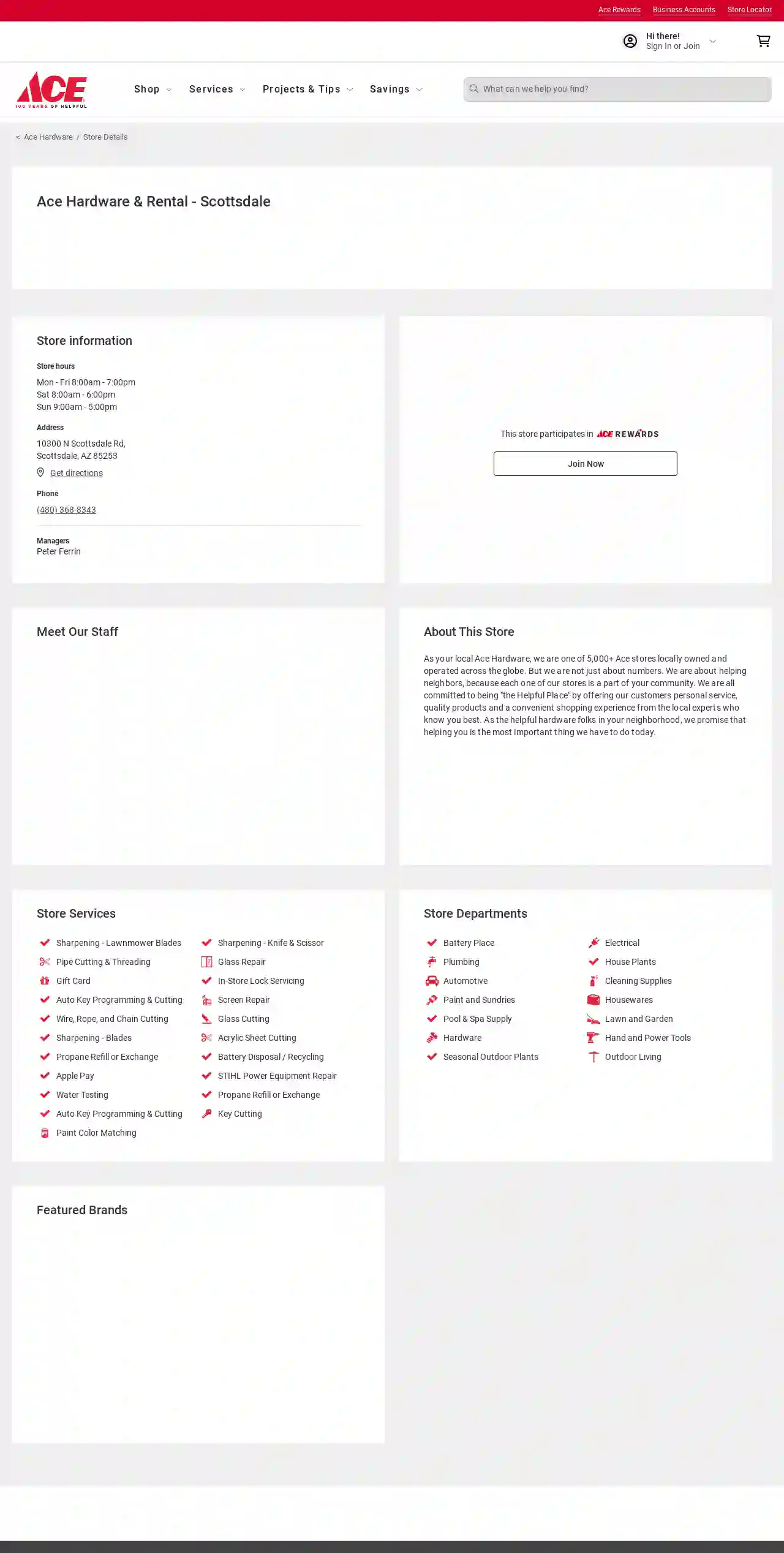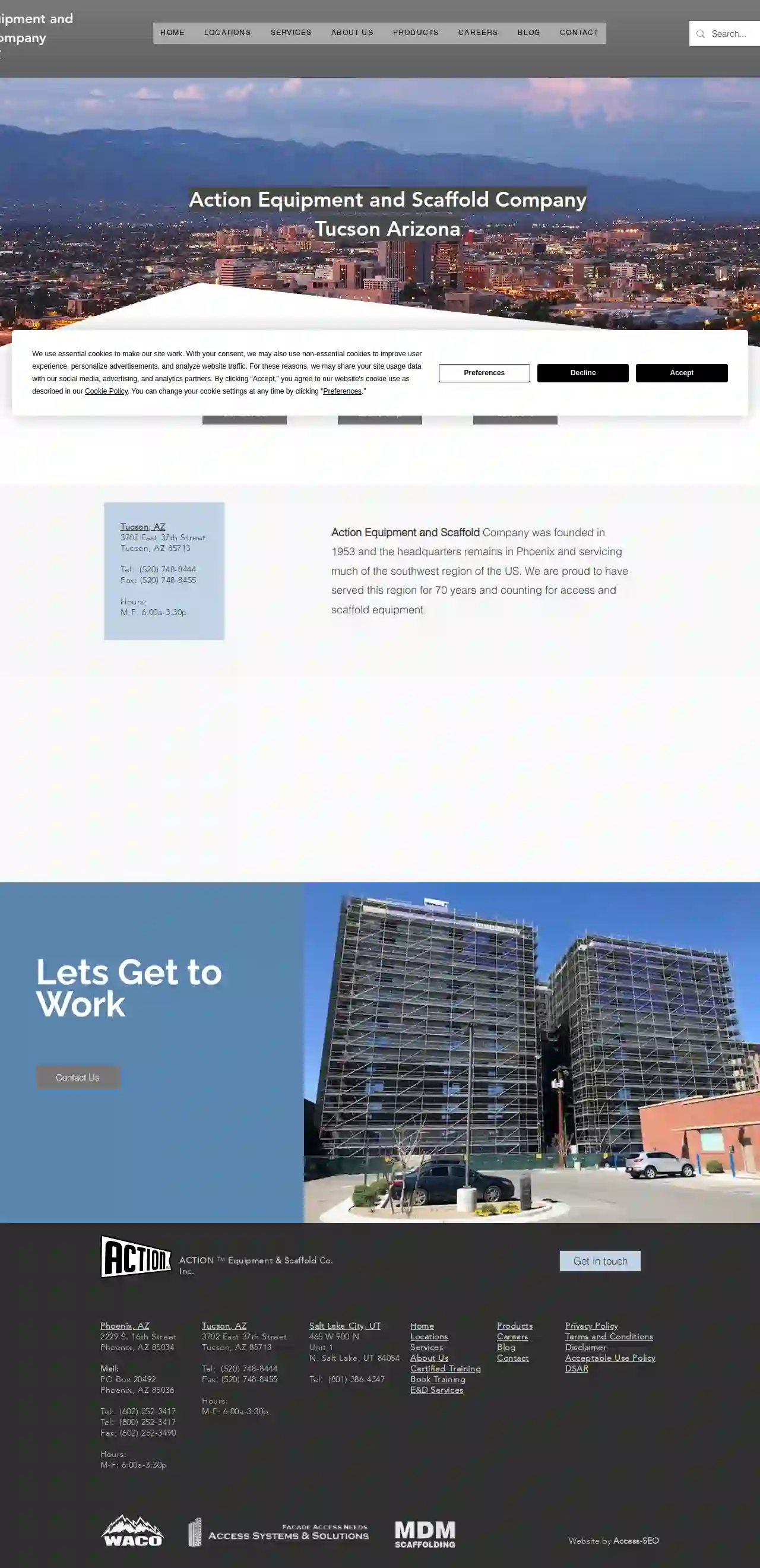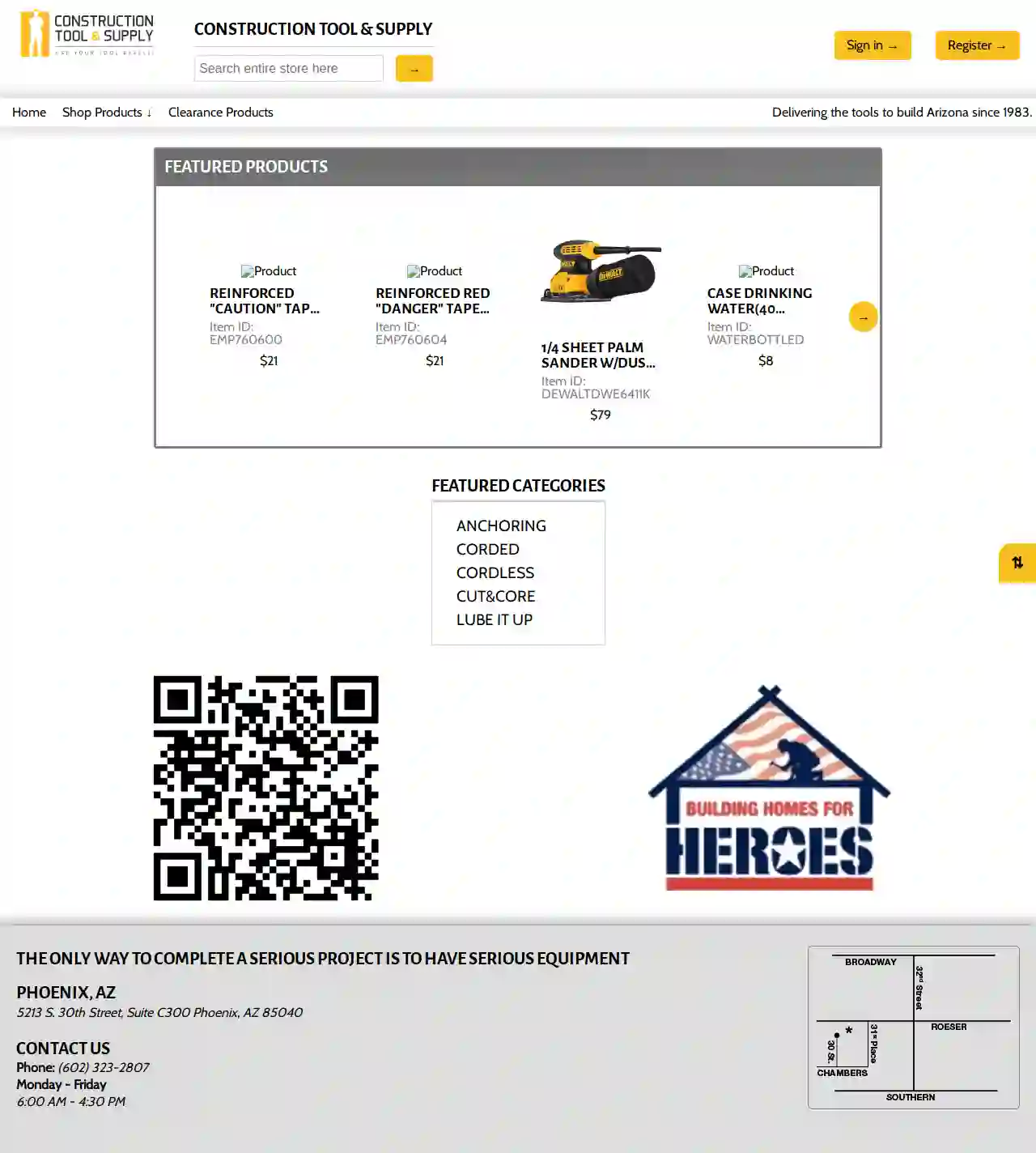Scaffolding Companies Summit
Find the best Scaffolding Experts in Summit
Receive 3 FREE Scaffold Services quotes for your project today! Compare profiles, reviews, accreditations, portfolio, etc... and choose the best deal.

Performance Contracting Inc
419 reviewsTempe, AZ, 6270 S. Ash Avenue, Suite A, Phoenix, 85283, USPerformance Contracting, Inc. is a top-tier specialty contractor in the United States, providing exceptional services and products to industrial, commercial, and non-residential sectors. With a wide range of related services, PCI establishes itself as a true 'one-stop-shop' contractor, ensuring customers receive comprehensive solutions tailored to their specific needs.
- Services
- Why Us?
- Accreditations
- Our Team
- Testimonials
- Gallery
Get Quote
Arizona Scaffolding
47 reviews3087 E Pecos Rd, Phoenix, 85048, USArizona Scaffolding is a leading provider of safe and accessible scaffolding solutions for residential and commercial projects. With a commitment to safety and customer satisfaction, they offer a range of services including scaffold tower rentals, stairwell scaffolding, and access to roof tops. Their team is dedicated to providing clean and well-maintained scaffolding equipment, ensuring a hassle-free experience for clients. Arizona Scaffolding serves various cities and offers delivery and installation services for all their products.
- Services
- Why Us?
- Accreditations
- Gallery
Get Quote
Ace Hardware & Rental - Scottsdale
4.4227 reviews10300 N Scottsdale Rd, Scottsdale, 85253, USAt Ace Hardware, we're more than just a hardware store. We're your local experts, committed to helping neighbors like you with quality products, personal service, and a convenient shopping experience. As one of over 5,000 Ace stores globally, we're proud to be a part of your community. Our mission is to be 'the Helpful Place' by offering expert advice, a wide selection of products, and a commitment to customer satisfaction. Whether you're a homeowner, DIY enthusiast, or contractor, we're here to help you get the job done right.
- Services
- Why Us?
- Our Team
- Gallery
Get Quote
JT Thorpe
511 reviews1060 Hensley Street, Richmond, 94801, USJT THORPE is your trusted partner for comprehensive solutions in refractory, scaffolding, fireproofing, insulation, and more. With over 100 years of industry experience, we deliver exceptional results with unmatched expertise and commitment to quality. Experience the JT THORPE difference: 100+ years of proven expertise in softcraft solutions, combined with cutting-edge technology and unwavering commitment to safety, quality, and reliability.
- Services
- Why Us?
- Gallery
Get Quote
Phoenix Scaffolding & Equipment
4.433 reviews4143 E. Winslow Ave., Phoenix, 85040, USFor over 30 years, Phoenix Scaffolding has been supplying contractors with quality scaffolding and shoring solutions to meet their job requirements. We offer an economical, competitive product selection including planks, safety equipment, floats, rope, wire, tape, hard hats, gloves, water jugs, and more. Phoenix Scaffolding can help you get your project done effortlessly and economically. Contact us today, our professional rental and sales experts are anxious to help you with all of your scaffolding, shoring and equipment needs. Why choose Phoenix Scaffolding? Scaffold, Shoring, and Swing Stage Specialists Phoenix Scaffolding is proud of our outstanding safety record and all our scaffolding is OSHA Compliant. Our knowledgeable, experienced staff will provide for your scaffolding needs in a highly safe and professional manner. Our company is experienced in all types of scaffold builds, including high rise structures and other advanced, time and security restricted projects. Statewide Estimating and Installation Our estimators are knowledgeable in the scaffolding field and will give you a competitive quote for your projects. We have experienced scaffold erectors for your installation and dismantle needs anywhere in the state of Arizona. Engineering Available Our engineers are capable of generating a safe working platform to meet your needs. We can quote and engineer most jobs from a set of plans. For more difficult jobs, our estimators can view the job site to take precise measurements and provide a fair, competitive quote. Rental and Sales We have a wide selection of scaffolding, planks, 5/16" wire rope and shoring including our safety equipment, harnesses, life lines, lanyards, rope grabs and more for sale. Our rentals include scaffolding, shoring, swing stage, trash chutes, bleachers, aluminum stringers and aluminum joists, and more. Ready to rent some equipment? Call Now
- Services
- Why Us?
- Testimonials
- Gallery
Get Quote
Vault Scaffold
43 reviewsMaryland, USWelcome to Vault Scaffold Vault Scaffold is proud to offer the finest Scaffolding in the World, UpRight Scaffold. Don’t settle for less: UpRight Scaffold is the Original, is the safest and utilizes the finest Irish Craftsmanship in every piece made. Still the world innovator in Aluminum Scaffold, Vault Scaffold with UpRight Scaffold is the Choice of CFO’s, CEO’s, Safety managers and front line workers for its light weight, ease of use, safety features and for its 70 year track record of providing the safest Aluminum Scaffold in the world. We have multiple warehouses to ship from, so your order arrives quickly, and most orders ship within 24 hours. Parts order usually ship the same day. Original Upright Parts or Original Vault parts, we have the stock for your field repair needs. Custom designs are not a problem as we offer design and engineering solutions to all of your high reach tower needs. Call us today to discuss your needs.
- Services
- Why Us?
- Gallery
Get Quote
BrandSafway Solutions Phoenix – Scaffolding, Access & Industrial Solutions
510 reviews1234 Industrial Blvd, Phoenix, 85001, USBrandSafway is a leading provider of access solutions, including scaffolding, aerial work platforms, and forming and shoring equipment. With a strong commitment to safety, quality, and customer satisfaction, BrandSafway offers a wide range of services tailored to meet the unique needs of clients across various industries. Their team of experienced professionals is dedicated to delivering innovative solutions that enhance efficiency and productivity, ensuring successful project outcomes.
- Services
- Why Us?
- Accreditations
- Our Team
- Testimonials
Get Quote
Action Equipment and Scaffold Company
4.622 reviews3702 East 37th Street, Tucson, 85713, USAction Equipment and Scaffold Company Action Equipment and Scaffold Company was founded in 1953 and the headquarters remains in Phoenix, Arizona. We are proud to have served the southwest region of the US for over 70 years, providing access and scaffold equipment. Our commitment to quality and safety has made us a trusted partner for businesses of all sizes. We offer a wide range of services, including: Erect and dismantle scaffolding Industrial scaffolding Certified safety training Our team of experienced professionals is dedicated to providing our clients with the highest level of service. We are committed to safety, quality, and customer satisfaction. Contact us today to learn more about our services and how we can help you with your next project.
- Services
- Why Us?
- Gallery
Get Quote
Construction Tool & Supply
564 reviews123 Main Street, Phoenix, 85001, USAbout Construction Tool AZ Construction Tool AZ is your one-stop shop for all your construction tool needs. We offer a wide selection of high-quality tools from top brands at competitive prices. Our knowledgeable staff is always available to help you find the right tools for your project. We are committed to providing our customers with the best possible service and support. We are a family-owned and operated business with over 10 years of experience in the construction industry. We understand the importance of having the right tools for the job, and we are dedicated to helping our customers succeed. We offer a variety of services to meet your needs, including tool rental, tool repair, and tool sales. We also offer free delivery and pick-up services for our customers in the Phoenix area. We are committed to providing our customers with the best possible service and support. We are a family-owned and operated business with over 10 years of experience in the construction industry. We understand the importance of having the right tools for the job, and we are dedicated to helping our customers succeed.
- Services
- Why Us?
Get Quote
Sunbelt Rentals
4.271 reviewsTucson, USSunbelt Rentals: Your One-Stop Shop for Equipment Rentals Sunbelt Rentals is a leading provider of equipment rentals in the United States and Canada. We offer a wide variety of equipment for rent, including aerial work platforms, scaffolding, ladders, cranes, boom trucks, scissor lifts, low-level access, manlifts, and more. Whether you're a homeowner tackling a DIY project or a contractor working on a large-scale construction project, Sunbelt Rentals has the equipment you need to get the job done right. We're committed to providing our customers with the best possible experience. That's why we offer a wide range of services, including: 24/7 customer support Fast and reliable delivery Competitive pricing Expert technical support We also have a team of experienced professionals who can help you choose the right equipment for your needs. Contact us today to learn more about our services and how we can help you succeed.
- Services
- Why Us?
- Gallery
Get Quote
Over 2,353+ Scaffolding Companies on our platform
Our scaffolding pros operate in Summit & surrounding areas!
ScaffoldingHQ has curated and vetted the Best Scaffolding Contractors in Summit. Find a trustworthy pro today.
Frequently Asked Questions About Scaffolding Companies
- Regulations: Local regulations often specify minimum inspection intervals.
- Project Type and Duration: Long-term projects or those in challenging environments may require more frequent inspections.
- Weather Conditions: Severe weather (storms, high winds) can necessitate additional inspections.
- Any Alterations or Modifications: Any changes to the scaffolding structure require re-inspection.
- Workers: Consider the number of workers on the scaffolding at any given time.
- Materials: Include the weight of building materials, tools, and equipment being used on the platform.
- Environmental Factors: Factor in potential loads from wind or snow, especially for taller scaffolding structures.
- Encroaches onto public property (sidewalks, roads): Permits are usually needed from the local council or highway authority.
- Exceeds a certain height: Scaffolding above a specified height often requires a permit.
- Is erected in a conservation area or near a listed building: Special considerations and permits may apply.
How often should scaffolding be inspected?
What is the weight limit for scaffolding?
Do I need a permit for scaffolding in the USA?
Can I erect scaffolding myself?
How often should scaffolding be inspected?
- Regulations: Local regulations often specify minimum inspection intervals.
- Project Type and Duration: Long-term projects or those in challenging environments may require more frequent inspections.
- Weather Conditions: Severe weather (storms, high winds) can necessitate additional inspections.
- Any Alterations or Modifications: Any changes to the scaffolding structure require re-inspection.
What is the weight limit for scaffolding?
- Workers: Consider the number of workers on the scaffolding at any given time.
- Materials: Include the weight of building materials, tools, and equipment being used on the platform.
- Environmental Factors: Factor in potential loads from wind or snow, especially for taller scaffolding structures.
Do I need a permit for scaffolding in the USA?
- Encroaches onto public property (sidewalks, roads): Permits are usually needed from the local council or highway authority.
- Exceeds a certain height: Scaffolding above a specified height often requires a permit.
- Is erected in a conservation area or near a listed building: Special considerations and permits may apply.